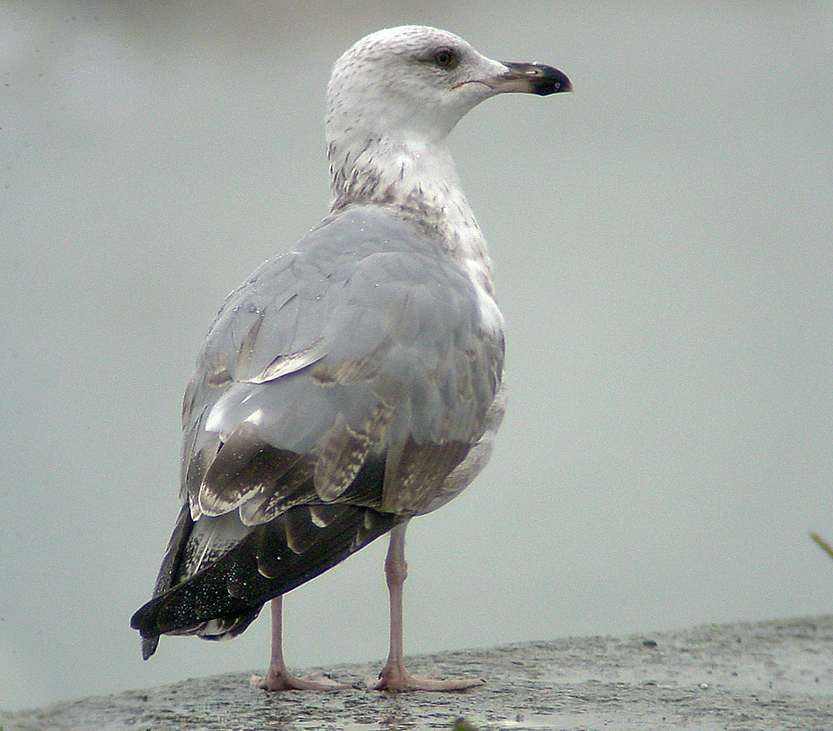 Yellow-legged
Gull - Larus michahellis
Yellow-legged
Gull - Larus michahellis
(last update: October 08 2013)
Coordinators:
Delfín González
Gabriel Martín
Antonio Gutierrez
Amir Ben Dov
Mars Muusse
Yellow-legged Gull michahellis 2CY, October 03 2002, Etaples, France.
2CY michahellis showing a very
advanced coloration of the upper-parts, as most feathers are adult-like
grey, lacking obvious barring. The actual moult stage is not
necessarily more advanced than birds showing barred upper-parts.
Obviously, in the wing-coverts many feather tracts are included in the
partial moult and there is still a clear gap in the greater covert bar.
The upper two tertials are new, grey while tertial #3 and the lower
tertials are still old (note that #4 has a damaged tip).
Greater covert moult stage: #1 fully grown, grey, #2 still growing, grey,
#3 is missing, #4 is still old, #5-6 are missing, #7 and outwards are old.
Median covert moult stage: all feathers have been replaced and #3-4 show a
different pattern, although from the same generation as the other medians.
Lower lesser coverts: #1-3 are new, grey, #4 is missing, #5 is new, #6 is
growing, #7 and outwards are new.
Lesser coverts: 50% is new grey, 25% is growing grey and 25% is missing.
Most scapulars (75-100%) have been replaced for plain grey feathers, but
the scapular coverts have some central markings.
The legs are pinkish, the base of the bill is pale, the iris is pale
brown-yellow, the orbital ring is brown-red.
These kind of individuals will develop almost all-grey upper-parts and white under-part after completion of the partial autumn moult, hence will probably difficult to age in the field -although the rectrices, primaries and secondaries are of course indicative for the age-class. In general, it will be the most 'advanced looking' 2CY Yellow-legged Gull one can find in NW France.
